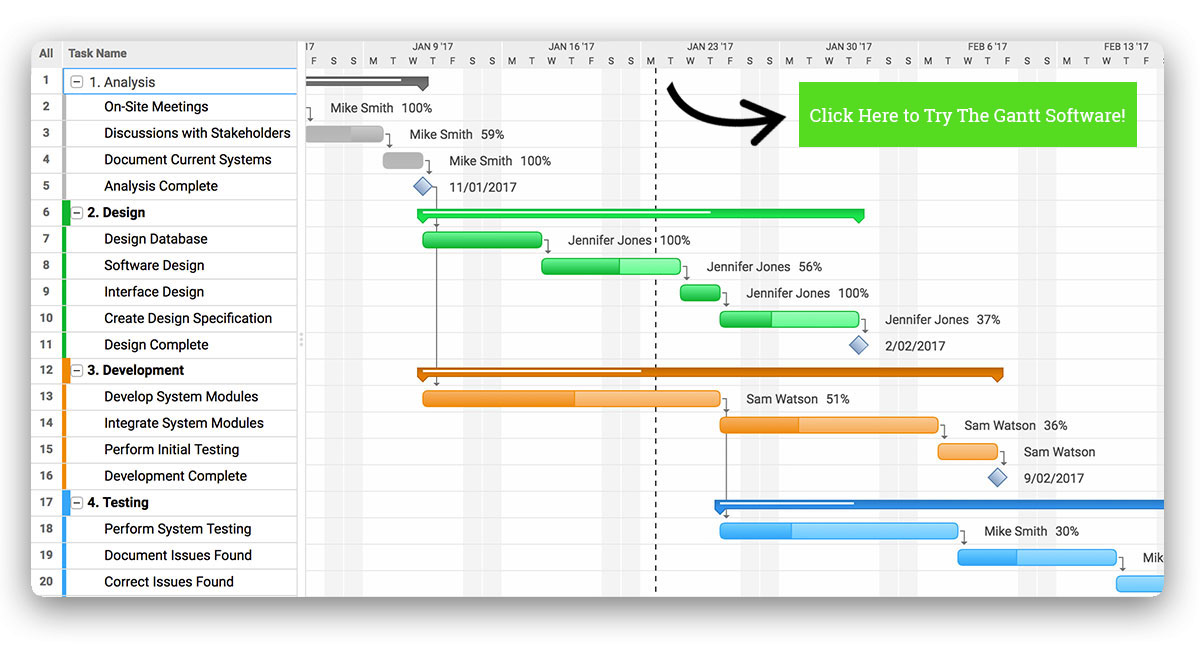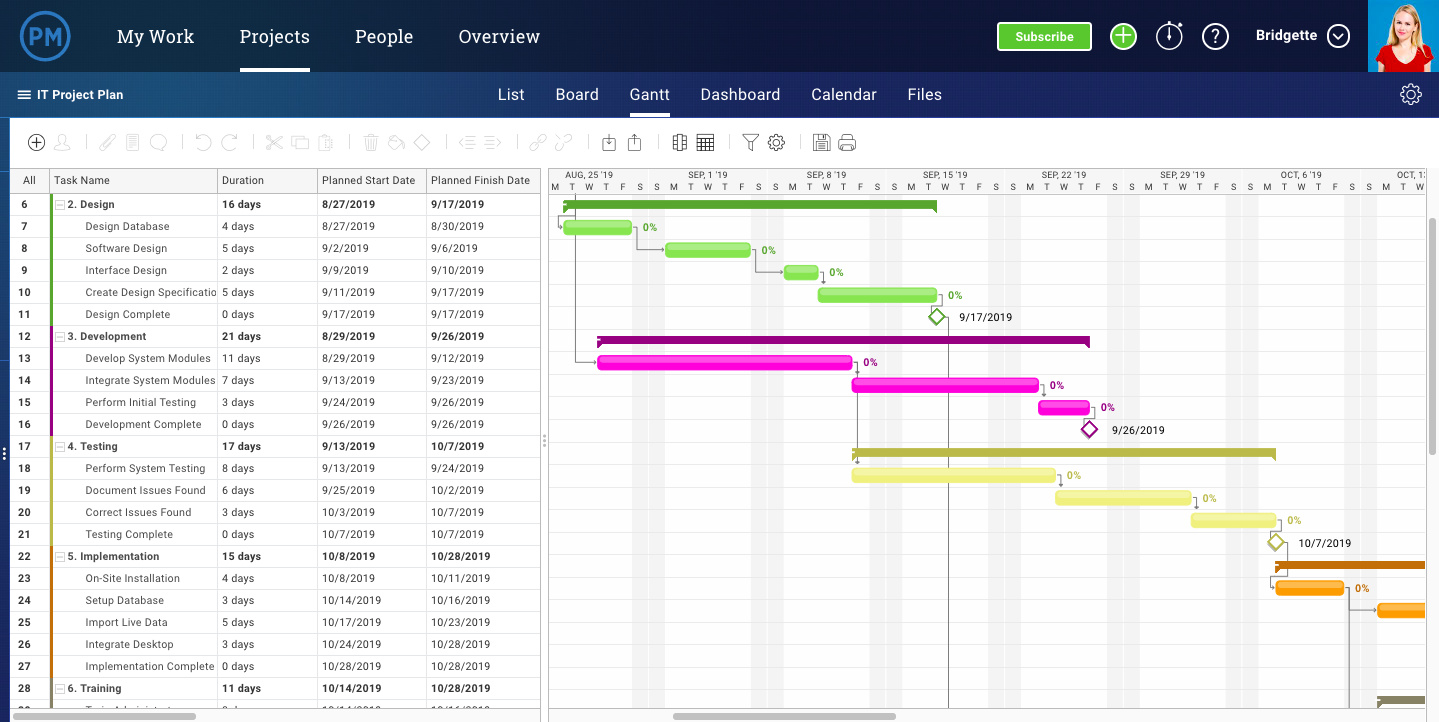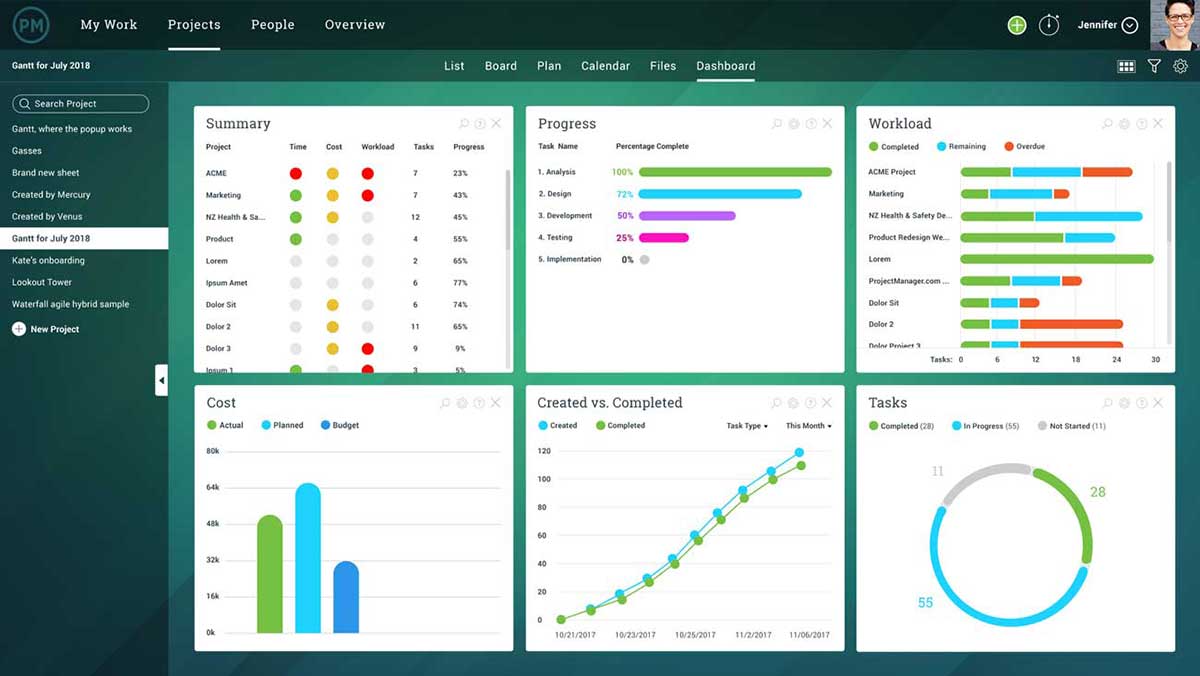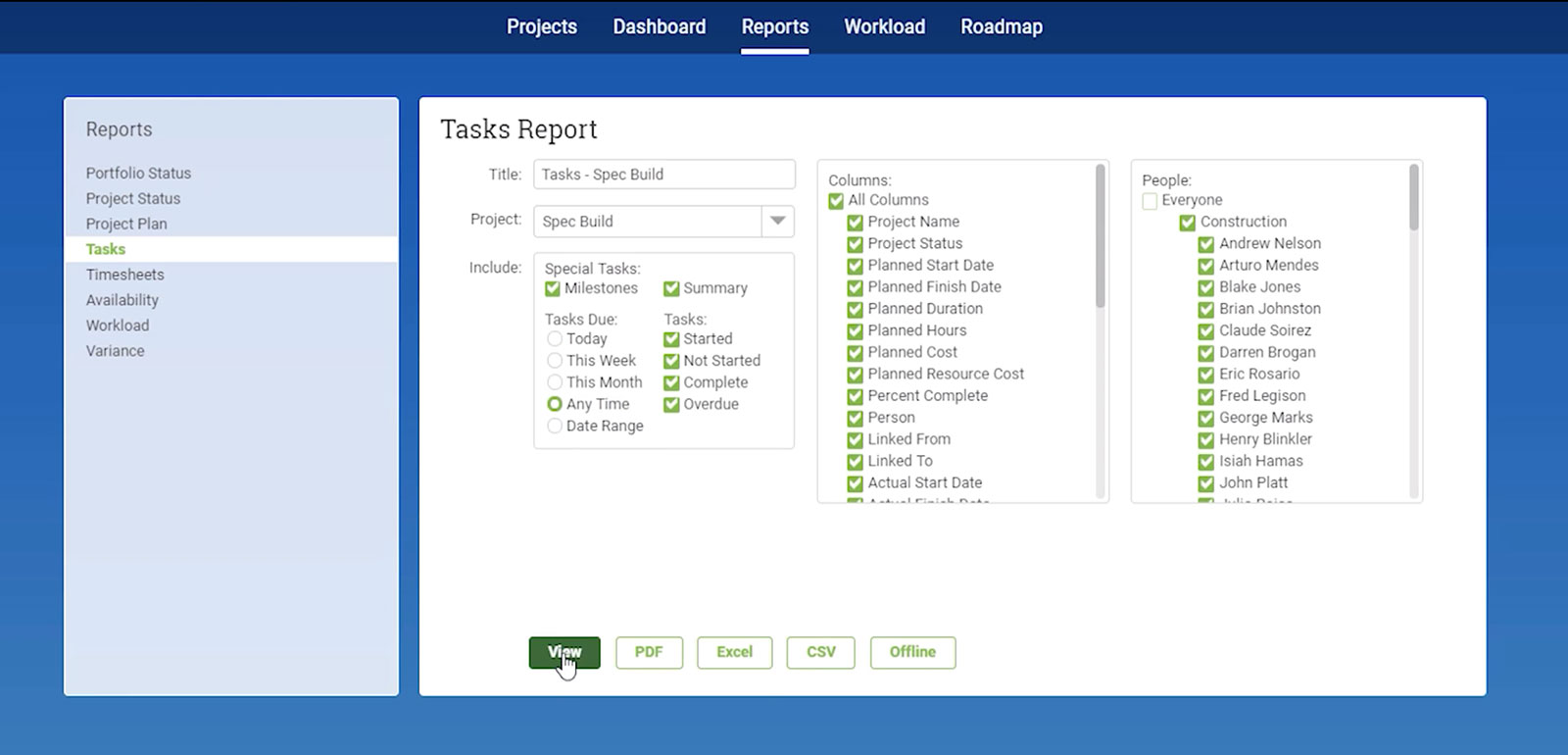Timetables, deliverables, resources and even risks—everything that is involved with a project is wrapped up inside the schedule. Arguably one of the single most important aspects to any well-planned project, your schedule dictates which tasks need to be done when, and which resources will be allocated to complete those deliverables.
But as they say, even the best-laid plans of mice and men often go awry. It’s up to an extremely adept project manager to enact better schedule management for their teams. Let’s take a look at how that’s done.
What is a Project Schedule?
A project schedule is a list of a project’s tasks, milestones, deliverables and resources with pre-determined beginning and end dates. Project schedules can be conceived from many places, but are primarily put together from a list of stakeholder requirements.
Project scheduling occurs during the planning phase of a project and shows how the tasks (and, ultimately, the entire project) will progress over the project timeline.
Related: Project Scheduling Software
How to Make a Good Project Schedule
Just like the 5 W’s of journalism, start creating your project schedule by asking yourself those same 5 W’s:
- Who (will do it?)
- What (resources do we need to make it happen?; needs to be done?)
- Where (i.e. which teams in which departments need to be involved to make it happen?)
- When (i.e. what does the timetable look like? 3 months? 6 months? 1 year?)
- Why (i.e. what is the ultimate goal of this project?)
You can even interview other team members and stakeholders by using these questions as a basis for your interview process. Then, aggregating their answers and coming to a formal agreement, you can start mapping out your dates, activities, set the timetables, milestones and allocate resources.
6 Schedule Management Tips
There are many ways to create a project schedule, but creating and managing a good project schedule takes calculation, time, strategy and collaboration. Let’s take a look at some tips on managing a solid project schedule.
1. Never Manage Your Project Schedule in a Silo
When managing your project schedule, always review the timeline with your stakeholders and team members at each milestone, so you can make sure that expectations on project completion are realistic and team members are confident in meeting the demand.
Whether it’s a fully detailed project schedule or a master schedule with a basic list of tasks, your timeline is the fundamental piece that will make the project go smoothly. Keeping an open line of communication on many ends will not only lessen risk but will ensure a seamless project process.
2. Make a Note of Milestones
Milestones can include the beginning and end of a project, as well as a method to mark the end of a phase of project work. This can include design approvals, product implementation, quality assurance and requirement completion.
Each milestone is also an opportunity to meet with stakeholders and team members and ask questions, review the success of the previous project phase, and make sure that everything is headed on the right track. Managing expectations at each milestone will help team members and stakeholders rest assured that the project is going according to plan.
3. Determine and Manage Your Dependencies
If one task can’t be completed without another task also being completed, that’s called a dependency. Determining these right off the bat and including them in your project schedule will help minimize risk and ensure that each task can be performed effectively with minimal roadblocks and need for management down the road.
Managing them thereafter means ensuring that every dependency has been marked off the list before another task has started. By keeping an open-door policy with your team members, you can make sure that no surprise dependencies have cropped up during the project process. Even if a dependency has suddenly come into play, you can ensure that it fits into the project timeline with ease by better managing an already-streamlined schedule.

4. Estimate & Review the Time it Takes to Complete Each Task
In order to properly calculate your schedule, you’ll need to factor in all dependencies and estimate the time it will take to complete each task, as well as the project as a whole. It’s also important to consider non-work time, like company-wide holidays and paid-time off so that no assumptions about employee’s time are made.
Of course, surprises will always come into play during any project, so manage these as early as you can. Is an employee going on an unexpected bereavement leave? You can embed this into your project timeline since you already gave yourself some wiggle room at the outset, and keep things functioning at optimal levels.
Then, once the tasks are complete, review the time it took to complete each task, note any surprises that came up along the way and address what steps were taken to manage those risks as they happened.
5. Chart your Critical Path
Your critical path is, well, critical. Charting it out will tell you the longest length of time needed to complete project tasks. It’s typically calculated automatically with project scheduling software, giving you a framework for understanding the least amount of time it will take to complete a task with the shortest amount of slack. This helps minimize risk and will serve to give you a good average or gauge against the actual realized time it takes to complete the given task.
To determine your critical path, you must complete the following:
- List all the tasks needed to complete the project
- Mark the duration of those tasks
- Collect your task dependencies and milestones, and list them out
Once these steps are complete, you can determine both the earliest project completion date as well as the latest project completion date so your stakeholders and team members can manage expectations properly.
Additionally, you can use this as a great tool to review the time it took to complete each task against critical path data, and see how your team members’ performances measure up.
6. Identify Scheduling Assumptions and Constraints
This part is easy to do and is also extremely important. In order to identify your assumptions, start by looking at your constraints. Your constraints are often identified by the time, budget and scope of any project, so your assumptions are usually in one of those three categories. Knowing what your assumptions are ahead of time will help you to better understand and mitigate project risk and deal with the potential impact of a risk coming to light.
Assumptions can include things like…
- Assuming your team will be completed with the project in a month
- Assuming none of your team members will be taking vacation days
- Assuming the team members will only cost a certain portion of the budget
Identify these and you’ll be able to do a better job at mitigating risk and getting a grip on your schedule.
How ProjectManager.com Helps with Schedule Management
Getting control over your schedules is no easy feat, but it does help if you already have a highly-organized schedule in place at the outset.
With ProjectManager.com, you can say goodbye to stiff MS Project and hello to our cloud-based, interactive Gantt charts. This planning tool will help you build out schedules along with their dependencies, track project progress and better collaborate with others across the board. You can import MS Project plans, too.

Sometimes, all it takes is having a little extra assurance that your project is functioning at optimal levels. With ProjectManager.com, you’ll get real-time dashboard tools that help you monitor tasks, teams, costs, scope and more so you can instantly see how your project is doing.

Meeting with stakeholders and need to show them how everything is progressing? Our reports are fully customizable to get you the data you need. Plus, you can calculate planned versus actual progress across individuals, tasks and projects so your critical path is completely measurable.

Risks and surprises can make for a sub-optimal project progress and throw your whole team off course. With ProjectManager.com, give your stakeholders and team members the software they need to collaborate effectively, report project issues and updates and make sure all dependencies are taken care of no matter what. Sign up for our free 30-day trial today.
No comments:
Post a Comment